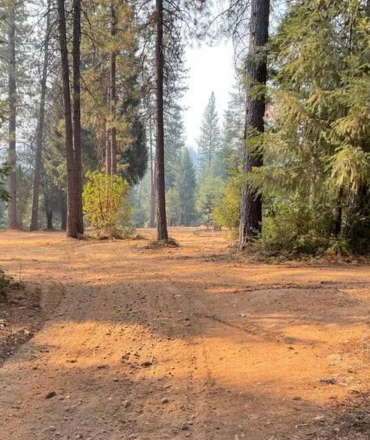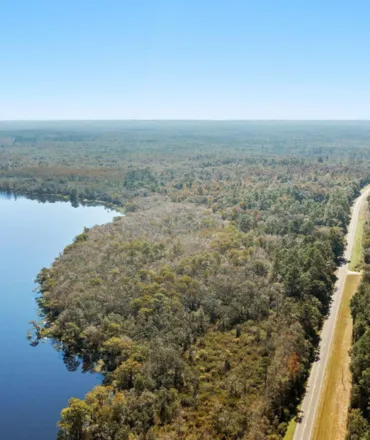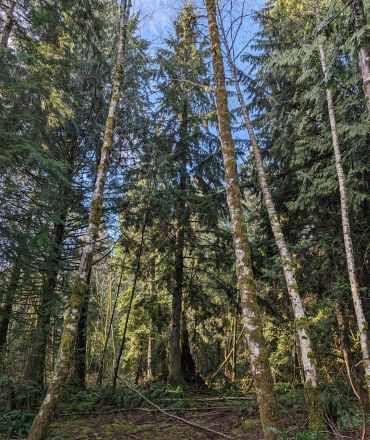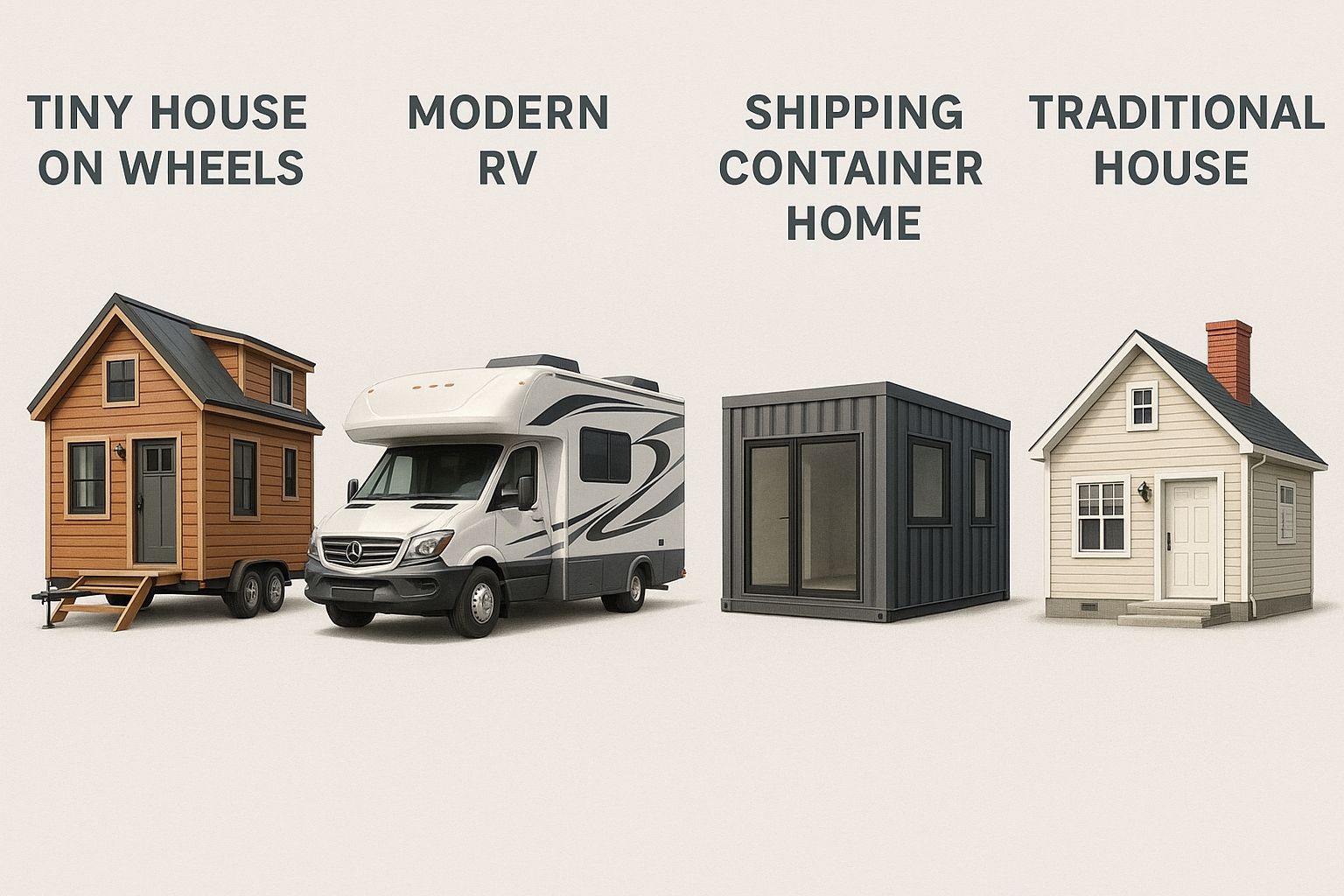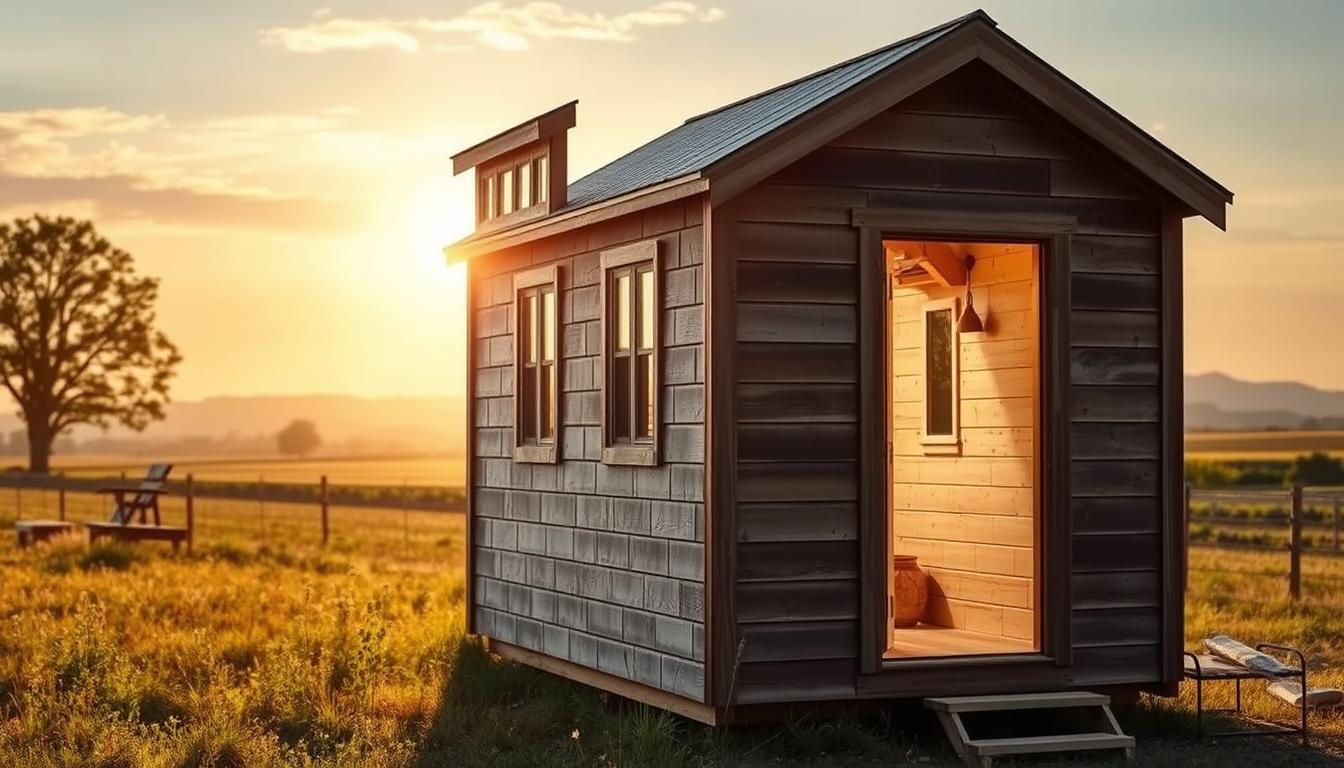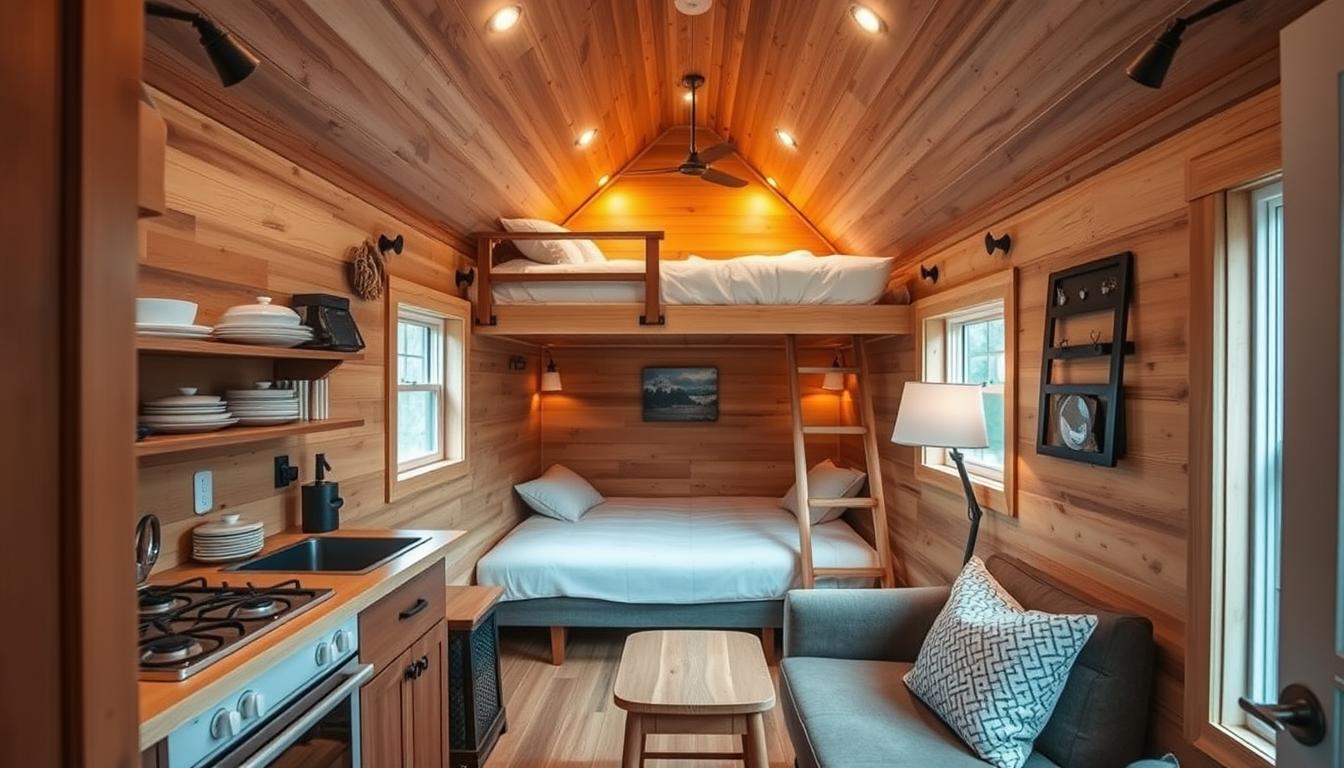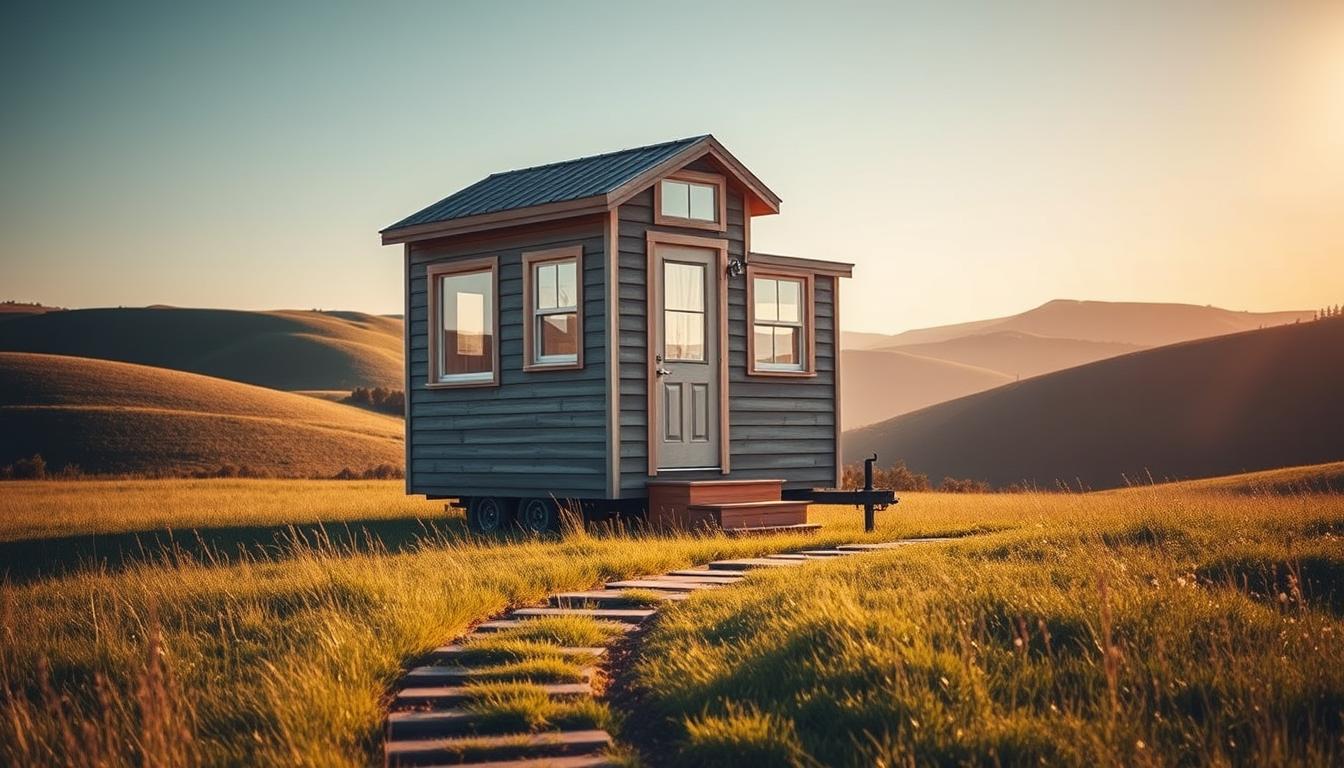What is the relationship between tiny house insurance, savings, retirement, the FIRE movement, frugality, and the EconoMe Conference?
Insurance for Tiny Houses
Akin to normal houses, tiny houses need insurance. However, due to the novelty of the topic Tiny House owners in the past had a hard time finding a house insurance company that could provide coverage for fire, liability, personal property and more. With Strategic Insurance Agency, it became a reality in all 50 states in the last couple of years. They provide coverage for tiny house owners if they are interested in a short-term rental such as Airbnb, while being thoughtful about tiny house builders as well. It offers a quote at an affordable price, and with every policy written they donate five dollars to a tiny house charity of the buyer’s choice.
Click here for more information or to get a quick quote. (Link used: https://www.strategic-insurance.com/ )
First of all, what is the FIRE movement?
FIRE stands for Financial Independence, Retire Early. This lifestyle movement is dedicated to extreme savings and investment, allowing people to retire far earlier than traditional budgets and retirement plans might allow. The purpose of this movement is promoting the empowerment over personal finances in such a way that an individual can design their own life with the motivation of work being optional. Through the challenging of the conventional wisdom surrounding time and money, it goes against what people may consider to be the perfect American dream.
The perfect American dream is considered, by most, a college dream of partaking a well-paying job, buying the biggest yet most affordable home, having children, owning brand new cars, and working until 65. It has become a socially conditioned normed that most individuals subscribe to.
But what if life was less about having more money to buy things that aren’t necessary, and more about being conscious of what is being spent along with your overall income?
Thinking more rationally and less systematically, meaning thinking in favor of personal success and goal achievement instead of seasonal sensations, the best option is to start making a plan that could help anybody save money and live better.
The FIRE dynamics
First off, individuals should increase the gap between what they earn, their expenses and investing the difference. Another way to keep to the FIRE dynamics is by saving upwards of fifty percent of their income. By investing this money, the person is able to enjoy the fruits of compound interest.
In other words, nothing works harder than the money that a person could invest.
The FIRE movement goes hand in hand with saving, and what better way to save more money than by earning extra money?
The many aspects of Saving Money
A lot of people consider saving money an art all on itself, but it does not have to be so complex. One could start to save money by means of a side hustle, finding higher paying work, investing in real estate, and decreasing expenses while still keeping in mind the big three.
The big three, housing, transportation, and food, are given this name based on the fact that these are the three areas that people spend the most on. Managing the income with the goal of saving in these areas is crucial for a beneficial outcome.
For example, instead of living in an expensive apartment in New York City, one could move to a low cost of living area such as Cincinnati, as told by Diania Merriam.
In the transportation area, a brand-new car is not necessary. A car could be defined as a depreciating asset, therefore the people belonging to the FIRE movement have said that spending the least amount on a car is an amazing solution to the transportation problem. A cheap car will serve the same purpose as a brand-new car; get the person from point A to point B.
Food, however, is a lengthier yet more indirect way of saving; one that really goes over people often.
The connection between Food, Health, and Saving Money
Restaurants and fast foods are a luxury, and the best way to evade wasting money on food is evading them completely. An alternative to saving money relating to food is meal planning and cooking for yourself. Other than saving money, this way of eating guarantees that any individual eats healthier, is more conscious in their choices pertaining ingredients and saves a lot of time. Meal prepping allows for a more relaxed week and more free time, without the worry of what is on the plate; time that anyone can use to further step in the right direction.
Party going doesn’t have to be affected by this, either. A casual meet up in a restaurant between a lot of friends can become cheaper economically, yet richer emotionally. The time and money used on an outing can be spent creating memories in a space that will be invaluable.
The joy of your needs being met efficiently through FIRE living
FIRE living does not need to be about deprivation, but of fulfillment in other areas that perhaps are not the most conventional. Following the FIRE movement as a way of living not only results in resourcefulness as many may think. It makes any person realize how their routine was more of an inconvenience and mindless consumption than a comfortable place for success.
How do the FIRE movement and the Tiny House Movement complement each other?
One of the main ways in which people are able to achieve this is through a minimalist lifestyle, which often includes tiny houses. This provides a link between FIRE and tiny houses that is very important for any individual, since a tiny house would mean reducing their housing costs. It involves more than just overall savings in the cost of a house because with a tiny house there is no space to store what isn’t essential, hence consuming less. In any case that someone really wants something, in order to not overflow their living space, it would result in the selling of another item or an exchange. The result? A healthy, downsized living environment that paves a path for success and balance in the life of any individual.
Consequentially, it all comes together as game of wits between reducing the cost of living, while increasing the income and therefore saving as much money as possible to be able to live off of the returns of one’s investment.
Finding meaning in what truly matters
As Diania Merriam says, it is experiences that can change a person; help them realize what they truly need and cherish. She shares her experience while walking the Camino, a 500 mile trek across Spain, to which she attributes her realization about what matters for her: the people around her, human connections, time and space to think, and having your basic needs met. That is the reason why many people decide to immerse themselves in minimalism. It grants an opportunity to be with the self, of finding what truly matters and leaving behind the consumerist ideals that have been socially normalized.
The negativity surrounding the FIRE movement and the tiny house movement
In principle, people fear what they do not know. In the era of growing connections through the internet, people who follow these types of movements are addressed with angry, sometimes unjust comments. As Diania Merriam explains, it likely has to do with the fact that “people may perceive that [ through explain these types of movements] we’re saying that they should do it, too”. Additionally, people may feel that their reality of what is normal may be threatened and take it out on whoever is trying to deliver a message that is both beneficial and educational for anybody. This is what most icons in the community are trying to do; barely sharing what makes their life enjoyable, efficient, and full of happiness.
Akin to many marketing strategies, the members of the community simply try to put forth information that could help whoever is reading or watching to achieve their lifegoals, one step at a time.
How much is too much, or too little?
The amount of money that needs to be saved following the FIRE movement varies by individual, and it mainly focuses on the yearly income of each person. Primarily, it is about saving how many times your annual expenses. This means that if you were to save 25 times your annual expenses, you could reach financial independence.
Is the FIRE movement doable for anybody?
Although every experience is unique, every individual could benefit of the initiative of the FIRE movement. The philosophy of the FIRE movement could benefit people with lower income; because it doesn’t mean deprivation, but to know and value what you have in order to live happily, minimally. It deals with the roots of problems surrounding money spending, shaping your mentality and mindset about consumerism. There is no need to earn $100,000 to start downsizing, because any type of saving is beneficial for the journey. Being of lower income doesn’t mean a person can’t live under the philosophy of the FIRE movement, but that maybe it will take them longer to get there.
The best way to succeed in the FIRE movement, however, is to develop your own set of rules, guidelines, routines, or what works best for you. What works for one, may not work for the other. The most beneficial thing is to customize the FIRE movement for your situation and what interests you because, even if the goal isn’t retirement by 65, you can get a lot out of savings.
How are frugality and the FIRE movement connected?
Extreme frugality is about questioning your wants and needs. As Diania Merriam says, every buying experience could become a thought-provoking experience to muse about. She would go through a series of questions, step by step, and then decide if it was worth it.
Step one: Questioning the consumption. Do I really need to buy this thing? Is it in need or is a want? Can I delay this purchase?
Step two: Questioning the nature of the item. Can I repurpose something that I already have? Her example: Why buy a watering device when I can simply fill a cup and water the plants one by one?
Step Three: Questioning the availability of the item. Can I borrow it?
Step Four: Question the utility of the item. Can I buy it used?
Step Five: If after all the questioning there was still the need to buy new, then buy it.
Another way Diania Merriam explains frugality is as giving power to your money, Will I give my money the power to buy me more quality time, or will I give it power over me to keep on chasing it? Money does, in a sense, buy time; if you have saved enough, you retire early, and have enough money to live without working and enjoying life. Frugality is all about constant effort, routine and habits, the same fundaments that laid the ground for the FIRE movement to take place.
The EconoMe Conference
The EconoMe Conference was, in essence, created under the idea that more reinforcement was needed by participants of the FIRE movement, maybe even tiny house living. Rooted under the effects that the influence of a consumerist society and culture can do to the will of an individual, the conference would serve as a safe space for people. In essence, it strikes to reinforce the believes and goals of people, reinforcing them to stay steadfast in their future benefits and goals, all while learning and embracing the movement that could grant freedom to many people.
The event aims to include 700 people, and as the organizer Diania Merriam says, it is about applying the careful management of available resources to maximize happiness. That marks the difference between economy and econoME because economy is more about the weather and resource of a country or region, especially in terms of the production and consumption of goods and services. Another reason behind this conference is to dissuade as much as possible the negative opinions about the FIRE movement and what surrounds it by making it an easily digestible in terms of acquirement of information.
It focuses on a new, refreshing view of the American Dream.
“[The concept of the American Dream] originated as this ideal where every person has the right to pursue his or her unique version happiness that stood out in a unique version of happiness” Diania says, “it’s you, kind of charting your own path. It kind of devolved into this consumerist, materialistic culture where that path is taught to us.”
In this context, the purpose of the conference is to reclaim the right of the original American Dream, while shaping it into something new that focuses solely on the purpose of the old ideal: individual and unique practices that lead to happiness. Happiness isn’t necessarily equal to the FIRE movement, but what this movement can teach you about finances may be essential in your journey to happiness. It focuses primarily on money, on experiences of people and their personal finance stories that will guide the viewer through a process of questioning. Questioning your assumptions about happiness, freedom, and prosperity.
With all of this in mind, the EconoMe conference is an environment made for people, by people to make information readily accessible regarding topics such as Personal Finances, the FIRE movement, and much more. It is a safe haven for anyone looking for guidance or companionship during their socially labeled bizarre journey with life.
External Resources:
Diania Merriam points towards drawing most of her information from the blogger Mr Money Mustache, as well as The Simple Path to Wealth by J. L. Collins. Additionally, she recommends Your Money Your Life by Vicki Robin, one of the pioneers of the FIRE movement.

